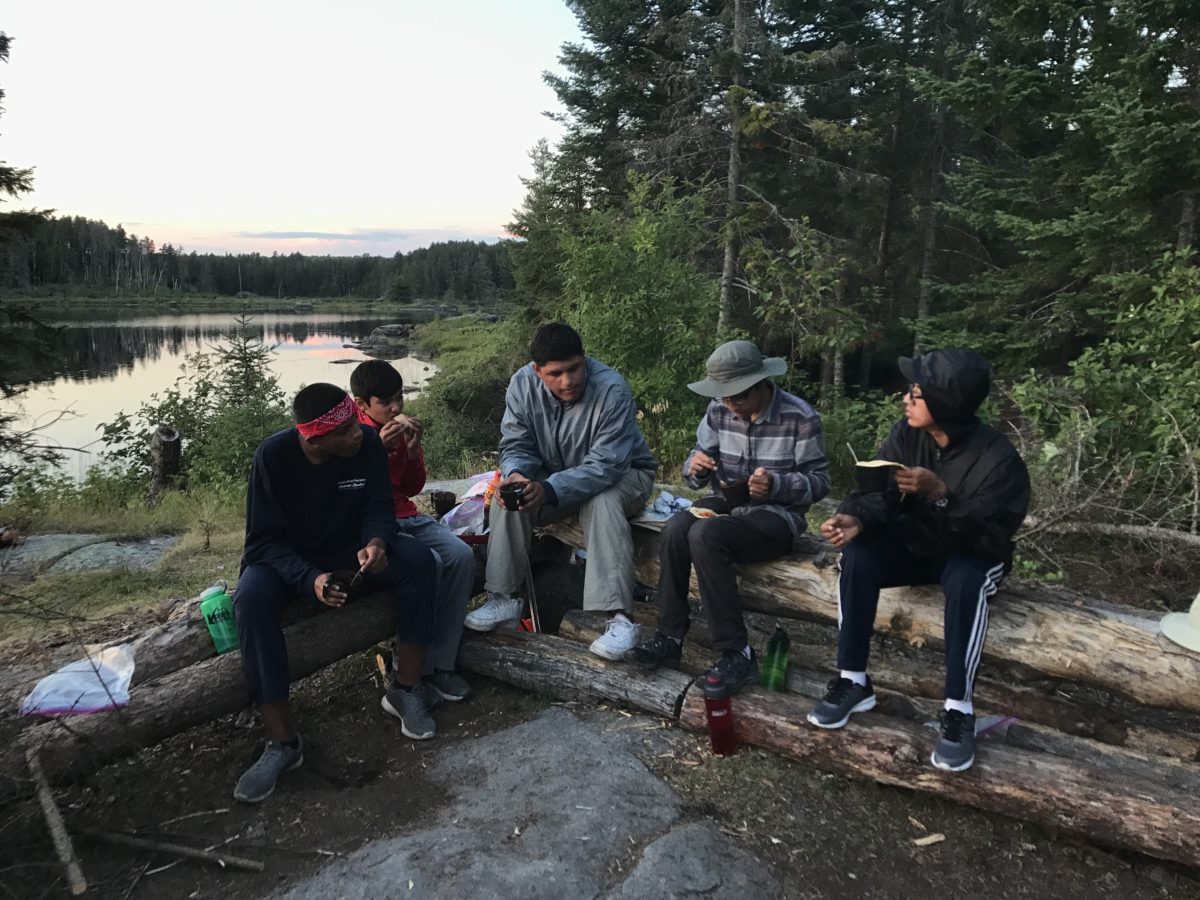Iam proud yet reluctant to share one of the best kept secrets in Back of the Yards for the past thirty years. I’m proud because it represents the abundance of beauty and strength that the people in our community embody, but reluctant because the outsider gaze brings with it a tendency to co-opt and reduce these traditions to something less than they were intended. Nonetheless, it’s important for us to tell our story and the ways we share and heal as a community.
In our neighborhood, we have established a healing, meaningful, and longstanding tradition for young people. Every year since the 1990s, groups of young people have embarked on a voyage into the wildernesses of the Boundary Waters Canoe Area Wilderness (BWCAW) and Rocky Mountains.
Many of the young people from the neighborhood who first went on these trips have grown up sharing stories of their experiences, their desires to go back, and the importance of a connection to each other and the relationship with nature. Some of them have gone back again and have shared the tradition with their loved ones, demonstrating the intergenerational connection that their nature experiences provided.
I personally have been on seventeen trips to the BWCAW and the Rockies living in Back of the Yards, and each of my trips has been alongside young people from the community.
Our neighborhood’s wilderness voyages are guided by four principles: health promotion, positive youth development, social justice, and culturally sustaining practices. The healing associated with these trips comes from the connection to nature and each other. It is seen in the ways young people organically and mindfully practice the version of health, safety, and wellness that they learn in the neighborhood and that can be sustained when our neighborhood is provided with the necessary resources and opportunities.
The young people refine and develop skills for exploring the wilderness and pull from the skills they learn to navigate the neighborhood. This is how positive youth development results in the formation of positive relationships (peer mentoring, teamwork), skill building (problem solving, tolerating distress), and wilderness preparation (first aid training, water/fire safety, map reading).
An element of social justice is embedded in these experiences, as young people advocate for and advance their understanding of environmental stewardship and equitable access to healthy green spaces in the neighborhood. A guiding ethic of these trips is to strengthen our commitment to being stewards of the environment to ensure clean water and air for people, the planet, and others. This ethic is then connected to our sense of social justice.
When we glance around our neighborhood and notice that for a city replete with natural resources, such as the lakefront and the 606 trail, we recognize the ways that such resources are positioned further away from our neighborhood and are blocked by infrastructure at every level all the way down to the speedbumps. This makes us keen to identify barriers and solutions for mobility and access in our city and obtain equitable green spaces for us.
Lastly, the final principle undergirding these wilderness excursions is the ways we sustain our cultures and traditions. These trips are not only a migration to a different geographic area, which is a parallel to the global movement of people historically and contemporarily, but they are also journeys through history to explore the lifeways and cultural practices of people and a world that was foreign to the wretch of colonization—providing a reminder of what is possible once we rid the earth of it.
In sum, we have created and sustained a lasting hyperlocal presence of connecting with nature in Back of the Yards. This means more than I can explain in words. We have generations of young people who have grown up going to the wilderness, thereby establishing a culture and practice that aligns and reinforces with our lifeways in our neighborhood; caring and fighting for the land, air, water, flora, fauna and each other.

